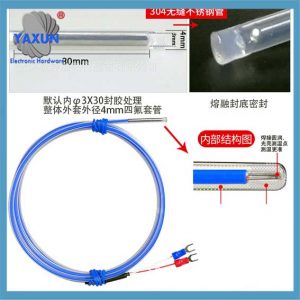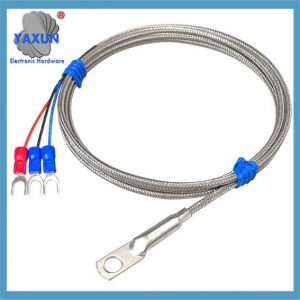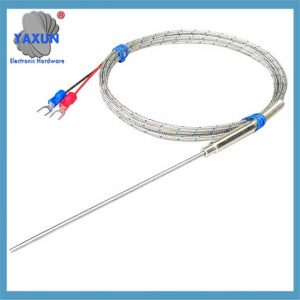“Cobrar por 5 minutos y recorrer 300km”, esto suena familiar, pero esta vez el protagonista es Huawei, y la pila de carga súper rápida lanzada recientemente por Huawei vuelve a estar muy por delante. La pila de carga súper rápida totalmente refrigerada por líquido de Huawei adopta tecnología avanzada de refrigeración líquida, Con las características de disipación de calor eficiente., carga rapida, seguridad y confiabilidad. Compared with traditional air-cooled charging piles, its heat dissipation efficiency is higher, and the charging speed and charging efficiency are also improved. Let’s take a look at what’s interesting.
1. En primer lugar, it is “fast”
The maximum power of the super-charging host is 720kW, and the single-gun super-charging terminal supports up to 600kW, realizing the “one second one kilometer” ** charging experience. Compared with traditional air-cooled integrated charging piles, Huawei’s fully liquid-cooled super-charging, integrated with light storage, through the “liquid cooling system + DC bus + ultra-fast integration” architecture. Under the same charging conditions, the station operation turnover rate is doubled, and in the future it will support DC stacking storage to achieve intelligent peak shaving and avoid city power transformation.
2. The second is “preciso”
Plug and charge, with a high success rate of one-time charging. Relying on Huawei’s intelligent algorithm, the full liquid-cooled supercharging station protocol is frequently updated. From Huolala to the latest models, they can be quickly identified, charged efficiently, and avoid identification errors.
3. The third is “light”
Compared with traditional charging piles, the weight of the Huawei liquid-cooled supercharging terminal gun line is reduced by 55%, and female car owners can also use it easily and charge elegantly.
4. The fourth is “quiet”
Low noise, good feeling, the equipment runs as low as 60dB (equivalent to the conference room environment), allowing car owners to complete charging in a quiet and comfortable environment. Actualmente, Yuefeng Yuexiang’s supercharging station has been put into use. Welcome all new energy car owners to experience the best charging experience brought by Huawei’s full liquid-cooled supercharging.
As a temperature collection expert, YAXUN, here we still focus on “fast”. Fast charging uses DC charging, the voltage is usually around 500V, and the power is above 20kW. Por lo tanto, it is necessary to convert AC power into DC power through the charging pile, and generally about 50% of the power can be charged in half an hour. Slow charging uses 220V civilian voltage to charge the battery, which can only reach a few kilowatts of power and takes 6 a 8 horas. Huawei’s fully liquid-cooled super charging pile has a maximum output power of 600kW and a maximum current of 600A, which can provide the maximum charging power in the highest altitude areas. Its charging range is 200-1000V, which can match passenger cars such as Tesla, Xiaopeng, and Ideal, and commercial vehicles such as Huolala.
YAXUN temperature sensor for new energy vehicles
“Full liquid cooling” means that both the charging host and the charging terminal use liquid cooling technology. Compared with traditional air-cooled charging piles, it has greater output power, stronger heat dissipation capacity, longer life, and higher charging efficiency. Además, the liquid-cooled charging pile has a built-in liquid-cooled temperature sensor, which can sense the temperature of the charging pile busbar, harness temperature, and ambient temperature in real time, and has higher safety and reliability. It reduces the safety hazards caused by overheating, and at the same time, super-fast charging also poses challenges to the safety of lithium batteries.
In order to achieve super-fast charging, the most important carrier in the charging process, the battery, also needs to be adjusted to a certain extent. The fast charging of the battery mainly depends on the charge and discharge rate of the battery. There are three main reasons that affect the charging rate: electrode materials, charging power of charging piles and power battery temperature. For battery companies, charging power of charging piles is an objective factor, while electrode materials and temperature control are where battery factories can make changes.
In the power battery link, the fast charging capability of the battery depends on multiple capabilities such as the ability of the negative electrode of the battery cell to quickly embed lithium, the conductivity of the electrolyte and the thermal management capability of the battery system.
During fast charging, lithium ions need to be accelerated and instantly embedded into the negative electrode. This poses a great challenge to the ability of the negative electrode to quickly receive lithium ions. If the negative electrode does not have the ability to embed lithium at a high speed, lithium precipitation or even lithium dendrites will occur, which will lead to irreversible attenuation of battery capacity and shorten the service life. Además, the electrolyte also needs to have a high conductivity, and it is required to be resistant to high temperature, flame retardant and overcharge-proof. Por otro lado, high-power fast charging will bring a significant increase in heat generation, and thermal management of high-voltage battery packs is crucial.
En términos generales, in the safety design of battery packs, thermal insulation materials with higher thermal insulation performance, such as ceramic insulation pads and mica boards, can be used for thermal diffusion protection. But in addition to passive thermal protection, active thermal protection solutions are also crucial. Various power battery companies have also “showed their prowess” in terms of material innovation and whole-pack thermal management.
The promotion of Huawei’s all-liquid-cooled ultra-fast charging piles has important strategic significance and market prospects, but it also faces some challenges and problems. Through continuous technological innovation and market promotion, Huawei is expected to take a leading position in the new energy vehicle charging market and promote the rapid development of the entire industry.
 English
English العربية
العربية Български
Български 粤语
粤语 中文(简体)
中文(简体) 中文(漢字)
中文(漢字) Nederlands
Nederlands Suomi
Suomi Français
Français Deutsch
Deutsch Ελληνικά
Ελληνικά Magyar
Magyar Italiano
Italiano 日本語
日本語 한국어
한국어 Polski
Polski Português
Português Română
Română Русский
Русский Slovenščina
Slovenščina Español
Español Svenska
Svenska ภาษาไทย
ภาษาไทย Türkçe
Türkçe Tiếng Việt
Tiếng Việt



